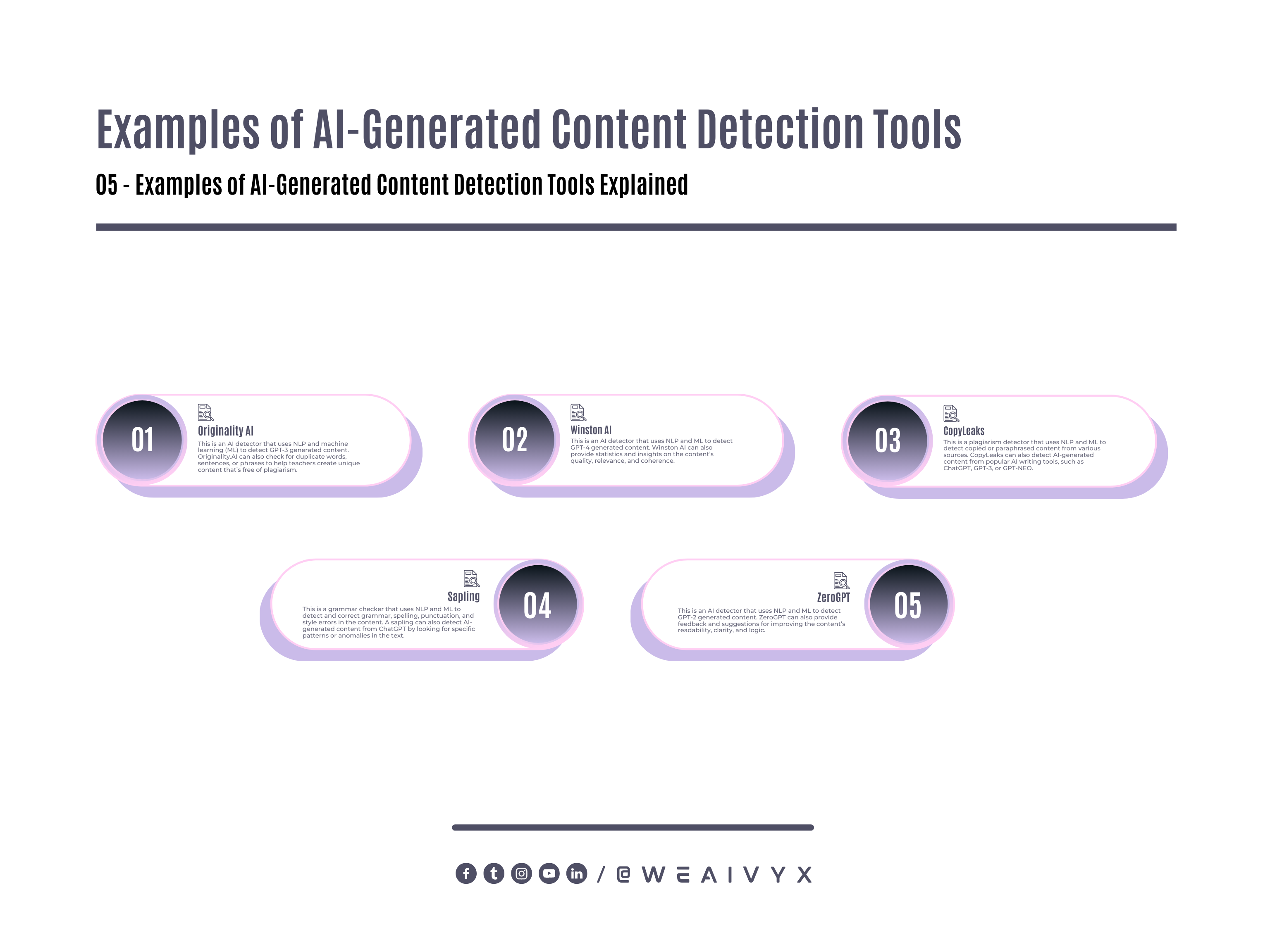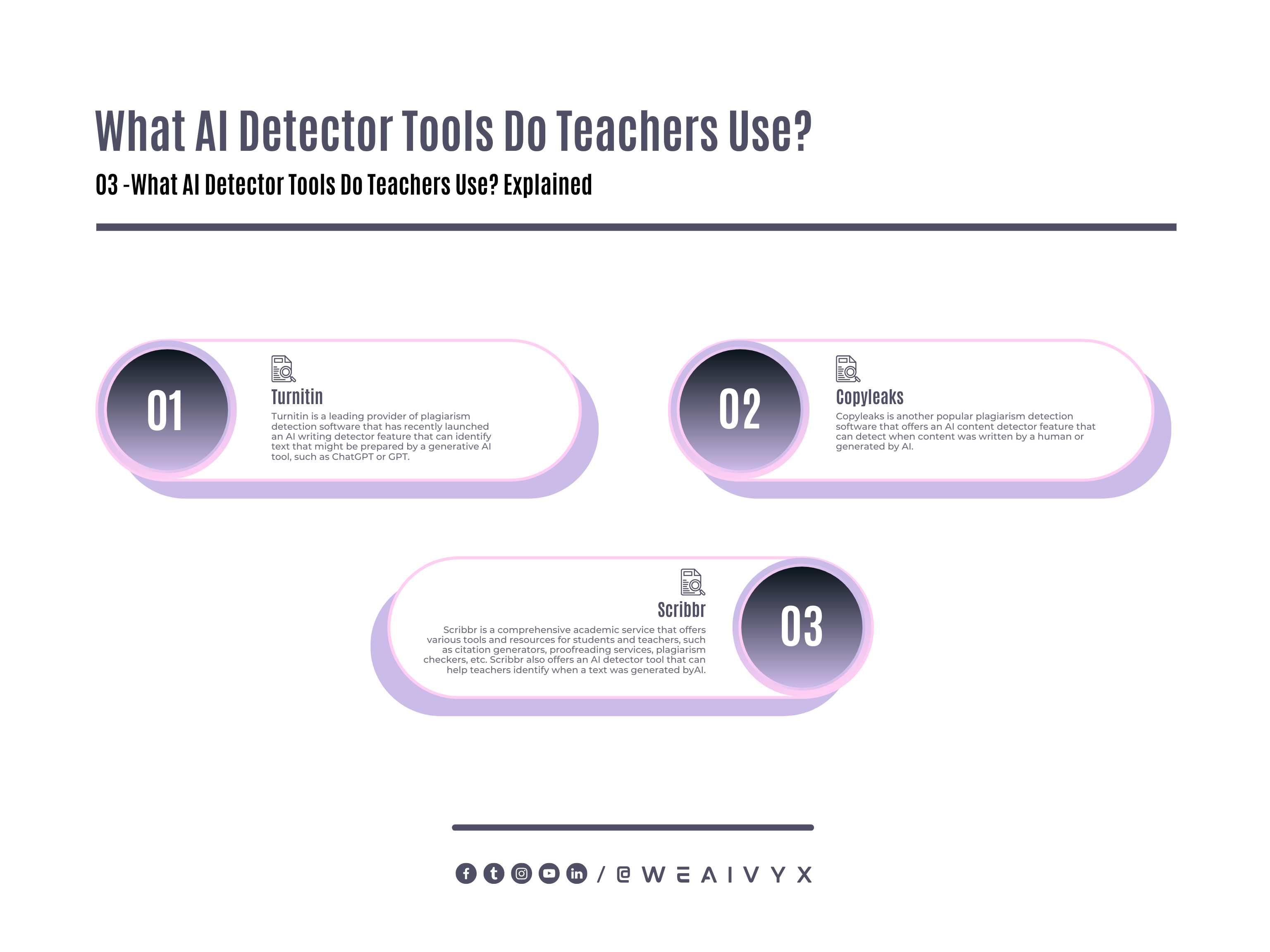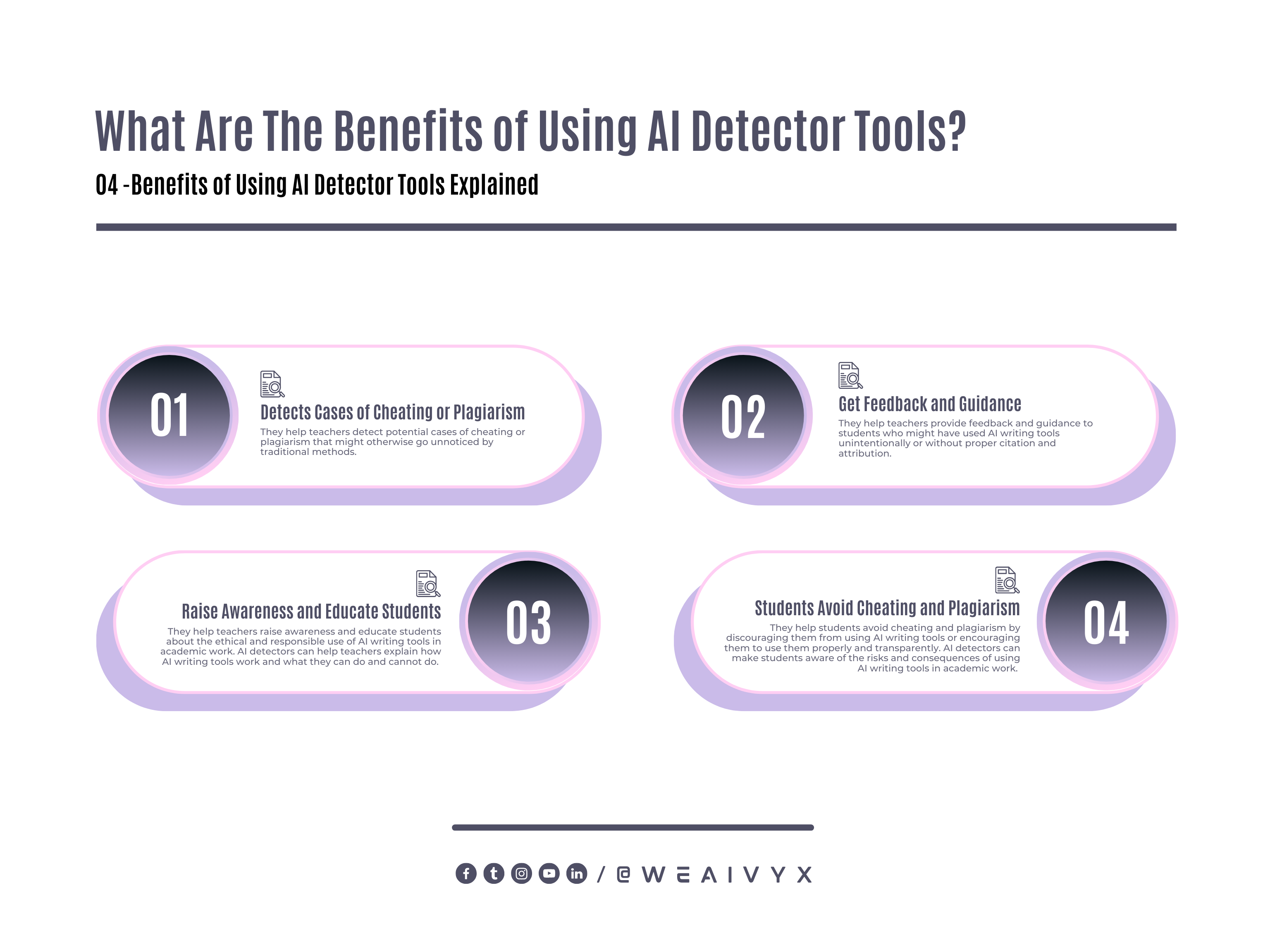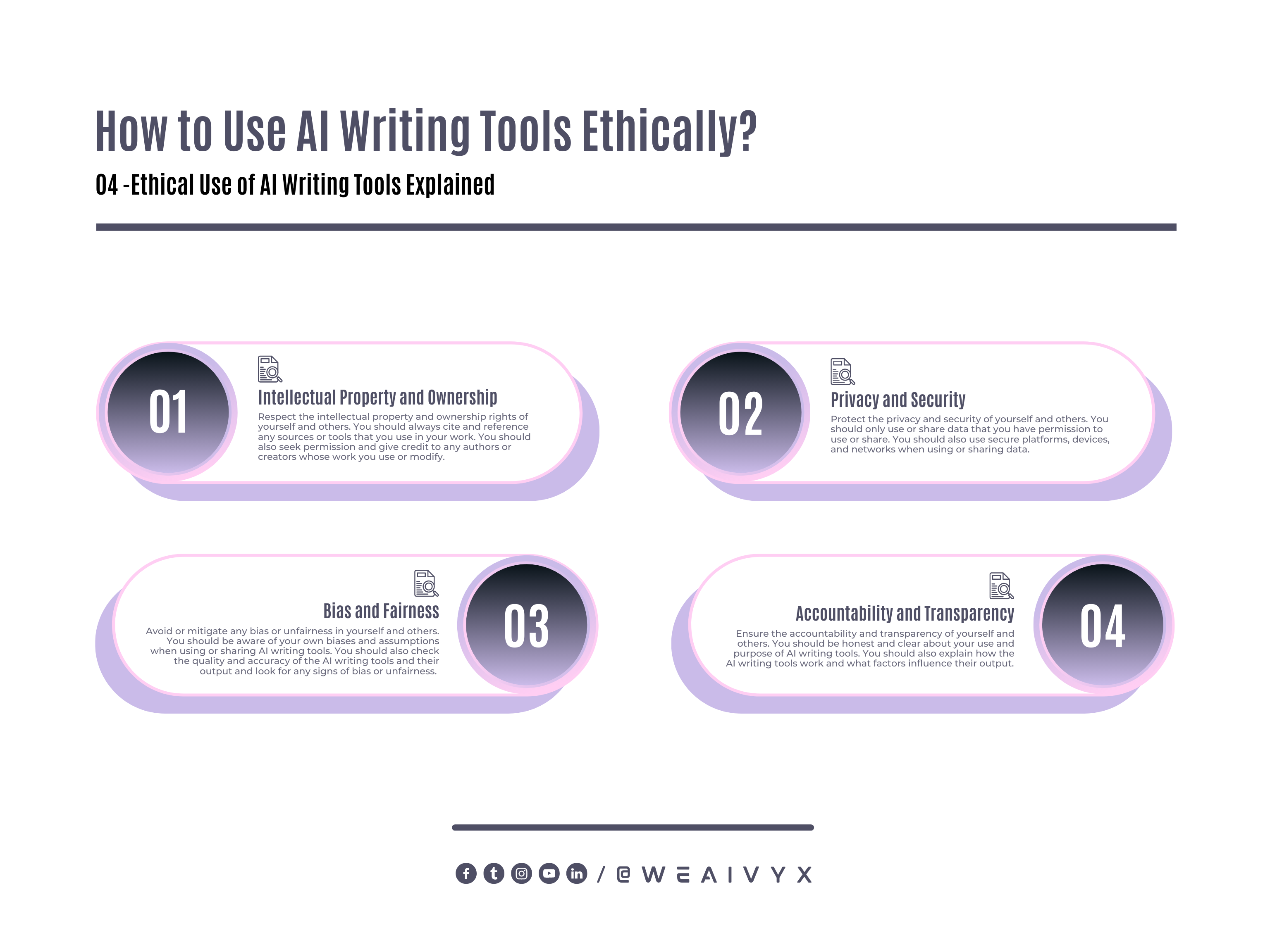Cheating and plagiarism are serious problems in education, as they can undermine the academic integrity and quality of learning.
Cheating and plagiarism can also have negative consequences for students, such as lower grades, disciplinary actions, or legal issues.
But how can teachers detect and prevent cheating and plagiarism in the age of artificial intelligence (AI)?
AI writing tools, such as ChatGPT, GPT-4, and others, can generate realistic and coherent texts on any topic, making it easier for students to cheat or unintentionally plagiarize.
That’s why teachers use various AI detectors to check for plagiarism and to detect if the work submitted by their students was generated using AI.
AI detectors are software tools that can analyze texts for various features, such as syntax, semantics, coherence, style, and tone, and assign a score or a label that indicates the likelihood of the text being generated by AI.
In this blog post, we’ll explain how AI detectors work, what benefits they offer to teachers and students, and what challenges and limitations they face.
We’ll also share some examples of AI detectors that teachers use and some best practices for avoiding cheating and plagiarism and using AI writing tools ethically and responsibly.
What is AI-Generated Content?
AI-generated content is any type of content that is produced by an AI system, such as a machine learning algorithm or a neural network.
AI-generated content can be based on existing data, such as text, speech, images, or videos, or it can be generated from scratch.
AI-generated content can be very realistic and convincing, especially when it is produced by advanced AI models, such as ChatGPT, GPT-3, or GPT-4.
These models use natural language processing (NLP) and natural language generation (NLG) to create coherent and fluent text on any topic or style.
They can also mimic the tone, voice, and personality of a specific person or entity.
AI-generated content can be used for various educational purposes, such as:
Creating learning materials, such as summaries, quizzes, or exercises
Providing feedback or guidance to students or teachers
Enhancing the engagement or motivation of students
Personalizing learning experiences for students
Improving accessibility or inclusivity of education
However, AI-generated content can also be used for malicious or unethical purposes, such as:
Spreading misinformation or propaganda
Impersonating others or creating fake identities
Cheating on assignments or tests
Plagiarizing or copying others’ work
Manipulating or deceiving others
Therefore, teachers need to be aware of the potential risks and challenges of AI-generated content and take measures to detect and prevent it.
How Can Teachers Detect AI-Generated Content?
There are several detection tools that teachers can use to detect AI-generated content in their classrooms.
These tools use different methods and techniques to analyze the content and determine its source and authenticity.
Some of the detection tools that teachers can use are:
Originality AI: This is an AI detector that uses NLP and machine learning (ML) to detect GPT-3 generated content. Originality.AI can also check for duplicate words, sentences, or phrases to help teachers create unique content that’s free of plagiarism.
Winston AI: This is an AI detector that uses NLP and ML to detect GPT-4 generated content. Winston AI can also provide statistics and insights on the content’s quality, relevance, and coherence.
CopyLeaks: This is a plagiarism detector that uses NLP and ML to detect copied or paraphrased content from various sources. CopyLeaks can also detect AI-generated content from popular AI writing tools, such as ChatGPT, GPT-3, or GPT-NEO.
Sapling: This is a grammar checker that uses NLP and ML to detect and correct grammar, spelling, punctuation, and style errors in the content. A sapling can also detect AI-generated content from ChatGPT by looking for specific patterns or anomalies in the text.
ZeroGPT: This is an AI detector that uses NLP and ML to detect GPT-2 generated content. ZeroGPT can also provide feedback and suggestions for improving the content’s readability, clarity, and logic.

These are just some examples of detection tools that teachers can use in their classrooms.
There are many more detection tools available or under development for different types of AI-generated content, such as speech, images, or videos.
How Do AI Detectors Work?
AI detectors are software tools that can analyze texts for various features, such as syntax, semantics, coherence, style, and tone, and assign a score or a label that indicates the likelihood of the text being generated by AI.

AI detectors use different methods and techniques to achieve this goal, depending on the input, output, and purpose of the tool.
Some common methods and techniques are:
Machine Learning Models
Machine learning models are algorithms that can learn from data and make predictions or classifications.
Machine learning models can be trained on large datasets of texts from various sources, such as human-written texts, AI-generated texts, or texts that were mixed or edited by humans or AI.
Machine learning models can then analyze new texts and compare them with the training data to determine if they are likely to be generated by AI or not.
Natural Language Processing (NLP)
NLP is a branch of artificial intelligence that deals with the interaction between computers and human languages.
NLP can perform various tasks, such as text analysis, text generation, text summarization, text translation, etc.
NLP can also extract various features from texts, such as syntax, semantics, coherence, style, and tone.
NLP can then use these features to measure the quality and originality of the texts and to detect any anomalies or inconsistencies that may indicate AI generation.
Statistical Analysis
Statistical analysis is a method of collecting, organizing, and interpreting numerical data.
Statistical analysis can use various measures, such as frequency, distribution, correlation, etc., to describe and compare texts.
Statistical analysis can also use various tests, such as chi-square test, t-test, etc., to determine if there are any significant differences or similarities between texts.
Statistical analysis can then use these measures and tests to identify any patterns or outliers that may indicate AI generation.
These are just some of the methods and techniques that AI detectors can use to analyze texts and detect AI generation.
There are many more variations and combinations of these methods and techniques, as well as new ones being developed every day.

What AI Detector Tools Do Teachers Use?
Teachers use various AI detector tools to check for plagiarism and to detect if the work submitted by their students was generated using AI.
AI detector tools are software tools that can analyze texts for various features, such as syntax, semantics, coherence, style, and tone, and assign a score or a label that indicates the likelihood of the text being generated by AI.
Some examples of AI detector tools that teachers use are:
Turnitin
Turnitin is a leading provider of plagiarism detection software that has recently launched an AI writing detector feature that can identify text that might be prepared by a generative AI tool, such as ChatGPT or GPT.
Turnitin’s AI writing detector uses a machine learning model that was trained on millions of texts from various sources, including human-written texts, AI-generated texts, and texts that were mixed or edited by humans or AI.
The model analyzes the text for various features, such as syntax, semantics, coherence, style, and tone, and assigns a percentage score that indicates the likelihood of the text being generated by AI.
The score is displayed in the side panel of the Similarity Report, along with an indicator that shows one of three possible states:
Blue (AI-generated text detected)
Gray (AI writing detection not available)
Error (AI writing detection failed).
To explore the results of the AI writing detection feature, teachers can select the indicator to open the AI Writing Report.
The report shows the text segments that were detected as AI-generated, along with their scores and explanations.
The report also provides some tips and resources for teachers to further investigate the source and quality of the text, as well as to engage in dialogue with students about academic integrity and the ethical use of AI writing tools.
Copyleaks
Copyleaks is another popular plagiarism detection software that offers an AI content detector feature that can detect when content was written by a human or generated by AI.
Copyleaks’ AI content detector uses natural language processing (NLP) and deep learning algorithms to analyze texts for various features, such as syntax, semantics, coherence, style, and tone, and assign a label that indicates whether the text was written by a human or generated by an AI tool.
The label is displayed in the dashboard of the Copyleaks Report, along with a color-coded indicator that shows one of four possible states
Green (human-written text)
Yellow (mixed human- and AI-written text)
Red (AI-generated text)
Gray (AI content detection not available)
To explore the results of the AI content detection feature, teachers can select the indicator to open the Copyleaks Report.
The report shows the text segments that were labeled as human-written or AI-generated, along with their sources and similarity percentages.
The report also provides some tips and resources for teachers to further investigate the source and quality of the text, as well as to educate students about academic integrity and the ethical use of AI writing tools.
Scribbr
Scribbr is a comprehensive academic service that offers various tools and resources for students and teachers, such as citation generators, proofreading services, plagiarism checkers, etc.
Scribbr also offers an AI detector tool that can help teachers identify when a text was generated by an AI writing tool like ChatGPT4.
Scribbr’s AI detector tool uses statistical analysis and machine learning models to analyze texts for various features, such as syntax, semantics, coherence, style, and tone, and assign a score that indicates how likely it is that the text was generated by an AI tool.
The score ranges from 0 to 100%, with higher scores indicating a higher probability of AI-generated text.
The score is displayed in the dashboard of the Scribbr Report, along with a color-coded indicator that shows one of three possible states
Green (low probability of AI-generated text)
Yellow (medium probability of AI-generated text)
Red (high probability of AI-generated text).
To explore the results of the AI detector tool, teachers can select the indicator to open the Scribbr Report.
The report shows the text segments that were scored as a low, medium, or high probability of AI-generated text, along with their sources and similarity percentages.
The report also provides some tips and resources for teachers to further investigate the source and quality of the text, as well as to engage in dialogue with students about academic integrity and the ethical use of AI writing tools.
These are just some examples of AI detector tools that teachers use to detect plagiarism and to detect if the work submitted by their students was generated using AI.
There are many more tools available online or in development that can perform similar or different functions.
Teachers should be aware of the features, benefits, challenges, and limitations of each tool and choose the one that best suits their needs and preferences.

What Are the Benefits of AI Detectors?
AI detectors offer several benefits to teachers and students who want to ensure the academic integrity and quality of their work. Some of these benefits are:
Detects Potential Cases of Cheating or Plagiarism
They help teachers detect potential cases of cheating or plagiarism that might otherwise go unnoticed by traditional methods.
AI detectors can identify text that might be generated by an AI writing tool, such as ChatGPT or GPT-4, which can produce realistic and coherent texts that may not be detected by similarity-based plagiarism checkers.
They Help Teachers Provide Feedback
They help teachers provide feedback and guidance to students who might have used AI writing tools unintentionally or without proper citation and attribution.
AI detectors can alert teachers to the possible use of AI writing tools and provide them with some tips and resources to further investigate the source and quality of the text, as well as to engage in dialogue with students about academic integrity and the ethical use of AI writing tools.
They Help Teachers Raise Awareness
They help teachers raise awareness and educate students about the ethical and responsible use of AI writing tools in academic work.
AI detectors can help teachers explain how AI writing tools work and what they can and cannot do.
They can also help teachers discuss the ethical and social implications of using AI writing tools and the best practices for avoiding cheating and plagiarism.
They Help Students Avoid Cheating and Plagiarism
They help students avoid cheating and plagiarism by discouraging them from using AI writing tools or encouraging them to use them properly and transparently.
AI detectors can make students aware of the risks and consequences of using AI writing tools in academic work.
They can also make students aware of the expectations and standards of academic integrity and quality.
They can also make students aware of the tools and techniques that teachers use to detect cheating and plagiarism.

What Are the Challenges and Limitations of AI Detectors?
AI detectors are not a perfect solution for detecting cheating or plagiarism in academic work. They have some challenges and limitations that teachers and students should be aware of.
Some of these are:
They Are Not 100% Accurate or Reliable
They may not always detect all forms of AI-generated text or they may misidentify some human-written text as AI-generated.
Therefore, they should not be used as the sole basis for adverse actions against students.
They require further scrutiny and human judgment in conjunction with an organization’s specific academic policies to determine whether any academic misconduct has occurred.
Not a Substitute for Human Evaluation or Feedback
They are not a substitute for human evaluation or feedback. They do not assess the quality or validity of the content or arguments presented in the text.
They do not provide any suggestions or corrections for improving the text. They only indicate whether the text might be generated by an AI tool or not.
Therefore, they should be used as complementary tools to enhance human evaluation or feedback.
Not a Comprehensive Solution for Cheating or Plagiarism
They are not a comprehensive solution for cheating plagiarism prevention or education. They only focus on one aspect of cheating or plagiarism detection: identifying text that might be generated by an AI tool.
They do not address other forms or sources of cheating or plagiarism, such as copying from other sources, collaborating without permission, falsifying data, etc.
Therefore, they should be used in conjunction with other tools and strategies for cheating or plagiarism prevention or education.
These are some of the challenges and limitations of AI detectors that you should be aware of before using or sharing them.
You should also be aware of the ethical and social implications of using AI writing tools and follow some best practices for using them ethically and responsibly.
How to Use AI Writing Tools Ethically and Responsibly?
AI writing tools are powerful and fun, but they also come with ethical and social implications that you should consider before using or sharing them.
AI Writing Tools Can Raise the Following Issues
Intellectual Property and Ownership
Who owns the rights to the texts generated or edited by AI writing tools?
How can you protect your rights or respect the rights of others?
How can you avoid infringing or violating any laws or regulations regarding intellectual property and ownership?
Privacy and Security
How can you ensure the privacy and security of your data or the data of others when using or sharing AI writing tools?
How can you prevent unauthorized access, misuse, or abuse of your data or the data of others?
How can you comply with any laws or regulations regarding privacy and security?
Bias and Fairness
How can you avoid or mitigate any bias or unfairness that may be present in the AI writing tools or their output?
How can you ensure that the AI writing tools or their output do not discriminate, harm, or offend anyone based on their identity, background, or characteristics?
How can you promote diversity, inclusion, and equity in the AI writing tools or their output?
Accountability and Transparency
How can you ensure the accountability and transparency of the AI writing tools or their output?
How can you understand how the AI writing tools work and what factors influence their output?
How can you provide feedback, report errors, or request explanations for the AI writing tools or their output?
Best Practices for Using AI Writing Tools
Respect the Intellectual Property and Ownership Rights
Respect the intellectual property and ownership rights of yourself and others while adhering to these precautionary measures.
You should always cite and reference any sources or tools that you use in your work.
You should also seek permission and give credit to any authors or creators whose work you use or modify.
You should not claim or imply that the work of others is your own or that you have any rights over it.
You should also respect any terms of use, licenses, or agreements that apply to the sources or tools that you use.
Protect the Privacy and Security
Protect the privacy and security of yourself and others while adhering to these precautionary measures.
You should only use or share data that you have permission to use or share.
You should also use secure platforms, devices, and networks when using or sharing data.
You should not disclose any personal or sensitive information about yourself or others without consent.
You should also delete any data that you no longer need or use.
Avoid or Mitigate Any Bias or Unfairness
Avoid or mitigate any bias or unfairness in yourself and others while adhering to these precautionary measures.
You should be aware of your own biases and assumptions when using or sharing AI writing tools.
You should also check the quality and accuracy of the AI writing tools and their output and look for any signs of bias or unfairness.
You should also seek diverse perspectives and opinions from others who may have different views or experiences than you.
You should also challenge any bias or unfairness that you encounter in yourself, others, or the AI writing tools.
Ensure the Accountability and Transparency
Ensure the accountability and transparency of yourself and others while adhering to these precautionary measures.
You should be honest and clear about your use and purpose of AI writing tools.
You should also explain how the AI writing tools work and what factors influence their output.
You should also provide feedback, report errors, or request explanations for the AI writing tools or their output.
You should also acknowledge any limitations, uncertainties, or risks associated with the AI writing tools or their output.
By following these best practices, you can use AI writing tools ethically and responsibly in academic work.
You can also improve your writing skills and critical thinking abilities and produce original and high-quality work that showcases your voice and perspective.

Conclusion
AI detectors are software tools that help teachers detect plagiarism and detect if the work submitted by their students was generated using AI.
They use various methods and techniques to analyze texts for various features and assign a score or a label that indicates the likelihood of the text being generated by AI.
AI detectors offer several benefits to teachers and students who want to ensure the academic integrity and quality of their work.
However, they also have some challenges and limitations that require further scrutiny and human judgment.
To avoid cheating and plagiarism and use AI writing tools ethically and responsibly in academic work, you should understand how they work, what they can do, and what they cannot do.
You should also respect the rights, privacy, security, diversity, inclusion, equity, accountability, and transparency of yourself and others.
We hope this blog post has given you some useful information about what AI detectors teachers use.
